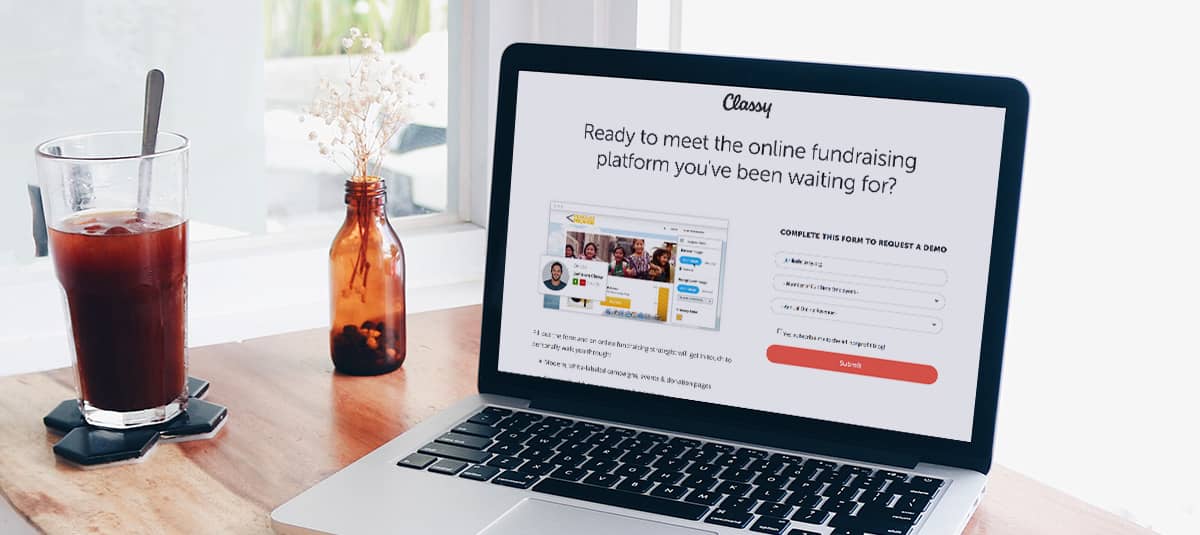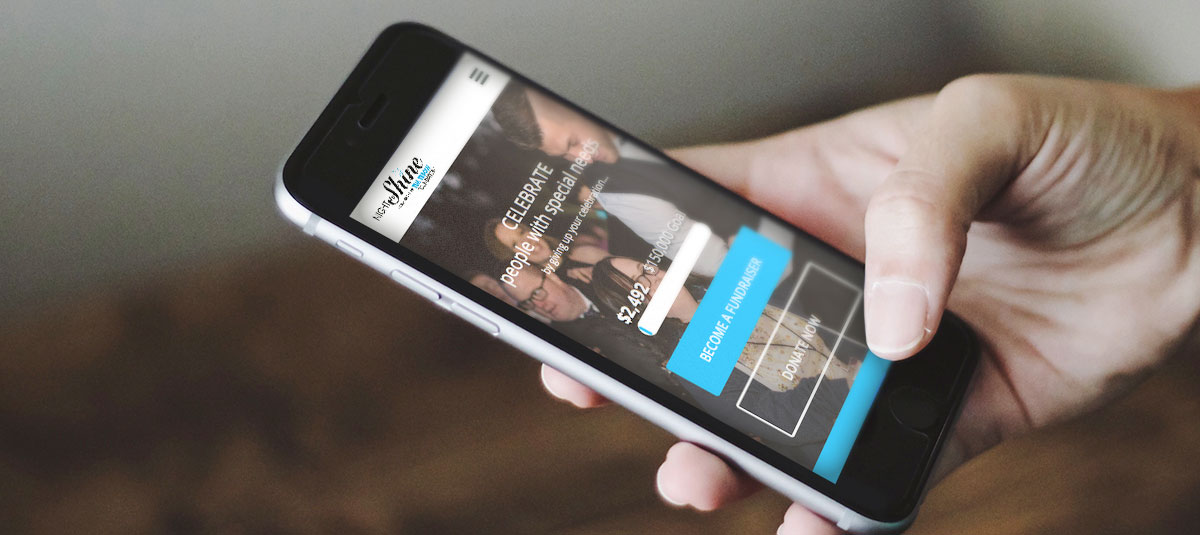How to Minimize Friction When Switching Fundraising Software

Request a Demo
Learn how top nonprofits use Classy to power their fundraising.
The process of switching fundraising software can cause disarray and headache in even the most organized teams. It often prompts questions like:
- What’s going to change?
- How do you prepare for the switch?
- When is it happening?
- Does this switch affect job security?
Proactive, thorough planning that starts even before the buying process can help answer these internal questions. If conducted properly, a software transition can go over with minimal friction.
Common Points of Friction
Before we dig into what a smooth transition looks like, it helps to call out some common points of friction organizations experience when switching platforms. They all build off one another, so you need to be aware of the following.
Lack of a Plan
You wouldn’t go on a road trip without knowing what route to take, where you’ll spend the night, and the sights to see along the way. Likewise, you need to map out your plan for switching software, from top to bottom.
Onboarding
If you lack a plan, your onboarding process likely won’t be well-thought out either. When can you expect the software to be fully implemented? Who’s going to spearhead the change? How are your colleagues going to use it? This needs to be figured out before buying.
Administration and Effort
Many teams hesitate to switch fundraising software because of the amount of administration oversight and general effort needed. You can dispel this by properly identifying the right champions at an organization to help with the transition.
Disrupting Habitual Practices
People can be resistant to change if they’re established in their ways, especially if they feel left out of the loop with regard to the decision to buy a new platform. Including your employees in the transition process can help.
Starting the Transition
Despite these common points of friction, the benefits of changing software are sometimes too great to ignore. For example, we’ve seen nonprofits switch to Classy from other fundraising platforms and experience massive growth.
How This Nonprofit Grew Its Online Revenue by 660 Percent
When making a big switch like this, it’s imperative that you set clear expectations from square one. Have a plan in place, but don’t assume the transition process is easy. This is a big job that requires clear communication and a deft strategy.
Build a Plan and Set Clear Expectations
First and foremost, before you go into the buying process, you have to do the right prep work. Start by identifying the key players at your organization and their roles in the transition process. Ask yourself who:
- Assesses the new software?
- Manages the current database?
- Handles all of the integrations?
Include these people in the buying process and map out what you will be looking for during this process. Organizations that successfully transition to new fundraising software ask questions and clarify everything.
If you make assumptions during the buying process, you’re going to create friction points instead of eliminating them. For example, asking if a platform has reporting features isn’t a deep enough question.
If the answer is yes, you might assume the new reporting feature works the same as your current system. Ask them if they have reporting features, and then ask precisely how those features work.
Ask every question that comes to mind. Even if you think it’s not a good question, it’s still worth asking. Expectations of what you’re buying need to be crystal clear.
Examine your organization’s key needs, down to the smallest detail. Be 100 percent sure the platform you’re considering can facilitate those needs, so you can accurately plan for the upcoming transition.
Get Ahead of Internal Resistance
One benefit to mapping out your expectations is that you can anticipate any qualms your staff might have with switching fundraising software. This requires that you get the right people to buy into the process with you—they should also be present and asking questions during your buying calls.
A common mistake when switching software is that only one person is involved in the vetting process. They make the final decision to purchase in a silo, and then go to the rest of the organization with it.
The problem here is that when you make this decision alone, the rest of the team is left feeling confused and ignored. Do you know if your new software platform is going to be able to handle the same tasks as your current one? Going to your organization early with a plan and expectations can help you avoid questions like this.
And you’ll need to continually repeat yourself throughout the process. Your team might only understand a small part of the software you’re considering purchasing. Maybe they’re unaware of the holistic value it could offer your organization.
For example, your previous software may have felt like a strong fit, but it took 10 days to close your month. If your new software meets the same needs, but gives you the ability to close your month in half the time, your team needs to know that.
Remind them of the entire scope of the platform you’re considering, even if you’re only focused on one small part of it at first. This is how you can start to show the value of the investment in new fundraising software.
Demonstrate Value to the Entire Organization
During your initial planning phase, it’s generally a good idea to select a champion who can explain to the organization why new software is a good investment. This person can help answer all questions from the organization and dispel any fears or concerns people may have.
This is an important part of the process, because people get used to systems and grow comfortable with their routines. A big switch disrupts this flow and can be overwhelming. Employees will have to relearn how to perform their daily actions in a new environment, and that can be a source of fear.
Not to mention, there are opportunity costs associated with changing fundraising software. With the new platform, you might not need as many people to do the same job anymore. Technology can expedite things you used to have to pay salaries for, so you should prepare to speak to this concern.
All this underscores the importance of having a dedicated champion within your organization. It might be a good idea to host a kickoff meeting where people can air their grievances, address concerns, and ask any questions they still have.
Then, everyone can begin transitioning onto the new fundraising software together. The more holistic you can make this process, the better—everyone should feel like they’re in the same boat.
Don’t Forget About Your Supporters
Changing fundraising software not only affects your organization, it affects all the people who support your organization as well. Some nonprofits are wary of switching platforms because of their donor base.
For example, if you regularly host events where 80 percent of your supporters show up the day-of with a check in hand, a transition in gift processing would directly affect them.
While it might be difficult to abandon past practices that were profitable, the opportunity of online fundraising far outweighs the risk for both your organization and your donors—make sure to communicate this to them. In order to get their buy-in, use a personalized approach for different supporter segments.
After you’ve rolled out the transition to your board, admins, and rest of your organization, you might then announce it to volunteers who help you run campaigns, and then finally your outside supporters.
While it can be difficult, overwhelming, and even downright frightening at times, don’t let those feelings affect your decision to purchase a new fundraising platform. In fact, fear can sometimes be a strong indicator of things we need to do in our lives and work.
The benefits of switching to new fundraising software that will help you perform your job more effectively and efficiently far outweigh the detriment. But it all boils down to strong planning efforts. If you take the time to build a detailed roadmap for your organization, you can successfully minimize points of friction during the transition.

Ready to Grow?
Subscribe to the Classy Blog
Get the latest fundraising tips, trends, and ideas in your inbox.
Thank you for subscribing
You signed up for emails from Classy
Request a Demo
Learn how top nonprofits use Classy to power their fundraising.
 Explore Classy.org
Explore Classy.org 

